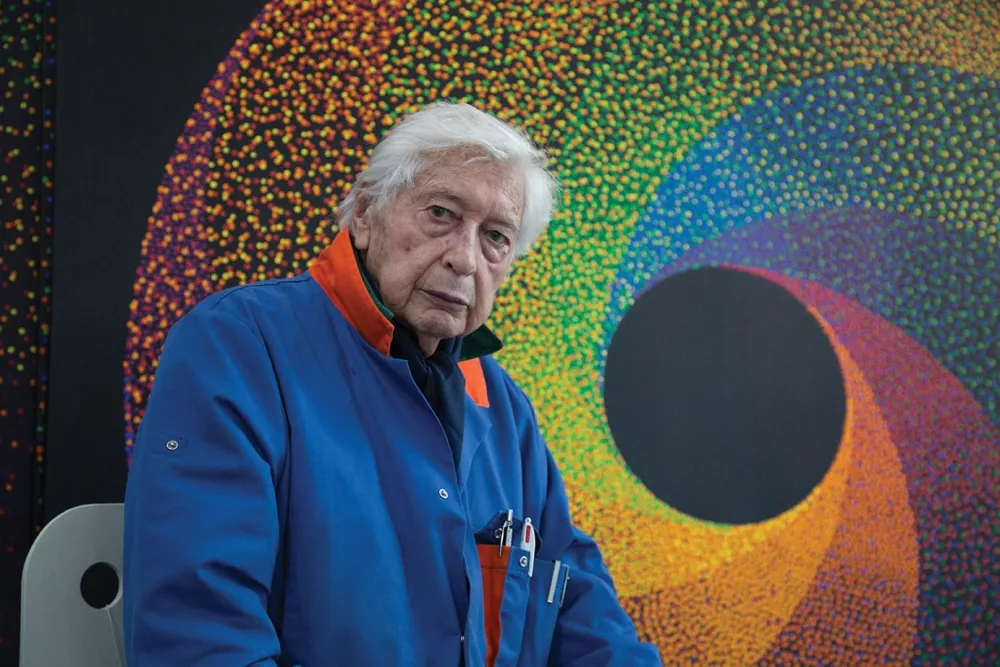Wood and Aluminum Sculpture | 72 x 20 x 6 cm | Signed on the bottom
"Composición" exemplifies Julio Le Parc’s commitment to dematerializing the static object into a choreography of perception. Executed in wood and aluminum, the sculpture evokes the language of spatial balance and rhythm—an elegant play of suspended forms that invites movement and multiplicity of viewpoints. Reflective aluminum strips interact with ambient light, while the vertical arrangement creates a dynamic tension between gravity and levitation.
Though intimate in scale, the work encapsulates Le Parc’s larger inquiry: how to shift the role of the spectator from passive observer to participatory agent. The viewer, through their motion and shifting perspective, becomes an essential element in the artwork’s unfolding presence.
"Composición" belongs to a broader series of sculptural works where Le Parc examines how material, space, and reflection can act as conduits for perceptual activation. The piece embodies his lifelong dedication to democratizing art through interaction, transforming the act of seeing into a sensorial, almost philosophical, experience.

A Pioneer of Perception and Participation
Born in Mendoza, Argentina, in 1928, Julio Le Parc is a seminal figure in the history of kinetic and op art. Based in Paris since the late 1950s, he was a founding member of the GRAV (Groupe de Recherche d’Art Visuel), a collective that challenged traditional notions of authorship and viewer passivity. Le Parc’s work revolves around movement, light, and visual perception, aiming to destabilize the fixed gaze and engage the viewer in an active experience of the artwork.
Le Parc's explorations merge rigorous geometry with optical experimentation, creating immersive environments and objects that shift with every angle and every step of the spectator. His career includes participation in the Venice Biennale (where he won the Grand Prize in Painting in 1966), exhibitions at the Palais de Tokyo, Serpentine Galleries, and more recently, major retrospectives at institutions like the Pérez Art Museum Miami and Museo de Arte Latinoamericano de Buenos Aires (MALBA).
To provide the best experiences, we use technologies like cookies to store and/or access device information. Consent to these technologies will allow us to process data such as browsing behavior or unique IDs on this site. Not consenting or withdrawing consent may negatively affect certain features and functions.
Market reports for visionary collectors and insiders.